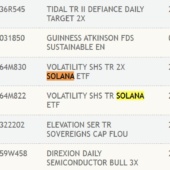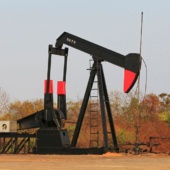By Valerie Volcovici
BAKU, AZERBAIJAN (Reuters) – U.S. President Joe Biden’s administration on Tuesday finalized a methane fee for big oil and gas producers meant to slash emissions of the powerful greenhouse gas, but which is likely to be scrapped by the incoming presidency of Donald Trump.
The methane charge is among the last actions the outgoing administration has taken to tackle the second most prevalent greenhouse gas after carbon dioxide that tends to leak into the atmosphere undetected from drill sites, gas pipelines and other oil and gas equipment.
The fee will start at $900 per metric ton of methane emitted in 2024, and increases to $1,200 in 2025, and $1,500 for 2026 and beyond. Under the rules, it would only apply to facilities that release more than 25,000 tons per year of carbon dioxide equivalent, according to the Environmental Protection Agency’s announcement.
The Biden administration announced the rule on the second day of the United Nations COP29 climate change conference in Baku, Azerbaijan, which includes a special side event on methane.
The U.S. had led the push for a Global Methane Pledge, a voluntary pact signed by over 100 countries that seeks to cut global methane emissions 30% by 2030. The world’s top oil and gas producer has also made cooperation on methane a centerpiece of its climate engagement with China.
The fee was mandated by the 2022 Inflation Reduction Act. The EPA last year finalized methane emission standards for the oil and gas sector, but had not completed rules for the fee intended to penalize companies that miss those standards.
“The final Waste Emissions Charge is the latest in a series of actions under President Biden’s methane strategy to improve efficiency in the oil and gas sector, support American jobs, protect clean air, and reinforce U.S. leadership on the global stage,” EPA Administrator Michael Regan said.
Methane has more warming potential than carbon dioxide and breaks down in the atmosphere faster, so reining in methane emissions can have a swift impact on limiting climate change.
The EPA estimated that this rule alone would lower cumulative emissions by 1.2 million metric tons of methane through 2035 — the equivalent of taking nearly 8 million gasoline-powered cars off the road for a year.

In January, oil and gas trade group the American Petroleum Institute called on Congress to repeal the fee.
After the November elections, in which Republicans are poised to hold control of the Senate, House and presidency, the prospect of a repeal has become more likely.














